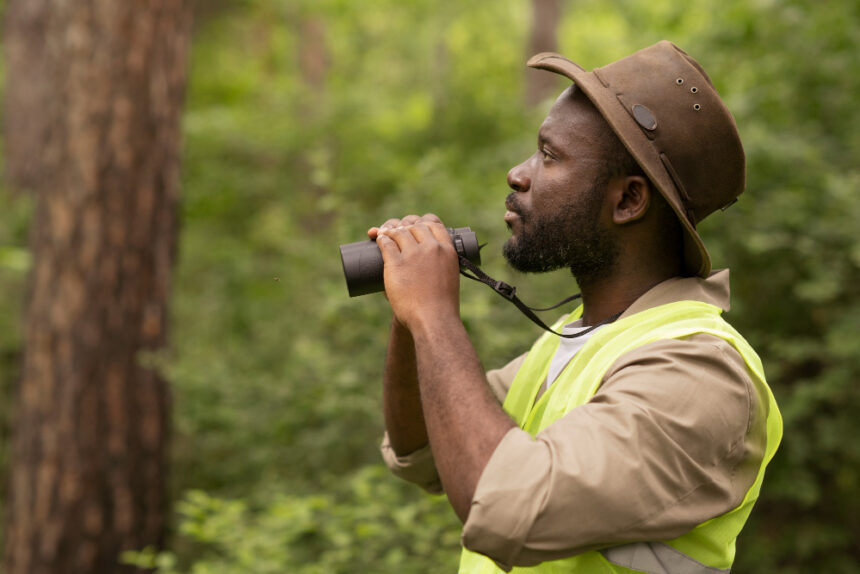The global temperatures are increasing, floods and tsunamis are frequent, hurricanes and cyclones are wrecking havoc, the polar ice caps are melting, and the sea level is rising.
In the course of seeking the elusive solutions, nature avails the best arsenal to counter the effects of the deviants. Combined with protecting and restoring ecosystems, the general concept of ecosystems can help to draw on innate nature’s potential of carbon uptake and sequestration, temperature regulation, and sustaining species. Following are some of the main strategies by which harnessing nature can assist in reducing the effects of climate change.
Forest Restoration: The Power of Trees
This process makes forest cover very essential since they help in reducing green-house gases such as CO2 from the atmosphere since they store this gas within their structure. Both reforestation and afforestation can be the processes by which a lot of CO2 may be spirited out of the air.
Numerous studies find that replanting the world’s forests can store carbon between 150 and 205 gigatons, making it one of the best natural ways to fight climate change.
And, of course, this matter does not only involve tree planting but also planting trees in a manner that supports English biodiversity and the English ecosystem. This is the case since monoculture practices ignore native species, which makes ecosystems less healthy, thus unable to cope with climate shocks.
That is why the preservation of existing old growth is just as critical since these forests contain a much larger amount of carbon than newly planted ones.
Wetlands and Mangroves: Coastal Defenders
Wetlands and mangroves are amongst some of the highest carbon stocks ecosystems known to exist in the world today. For instance, the mangrove forests are capable of sequestering as much as four times the amount of carbon found in other kinds of forests that are on land.
These coastal ecosystems are not just places of carbon storage but also protective shields against increased water levels and storm events. As we protect such pieces of land, we are in a position to address climate change issues as well as enhance the ability of the various communities to contend with coastal disasters.
However, wetlands and mangroves are under threat of degradation through human activities such as agriculture, conversion of wetlands to urban areas and industries, and pollution. These ecosystems could be restored to reduce chances of emission of stored carbon and protect 73 million people living along coastal lines from future effects of climate change.
Regenerative Agriculture: Soil as a Carbon Sink
One can say that Agriculture is not only a problem but also a potential solution as long as it continues to be a significant source of greenhouse gases. Some of the conservation techniques, like crop rotation, use of cover crops, and minimum tilling, increase the ability of soil to sequester carbon. These healthy soils do more than sequester carbon; they enhance water infiltration and soil biotic life, meaning that ecosystems are more drought- and heat-resistant.
As a result of turning a new page on industrial methods that hinder the health of our soil and contribute to deforestation, regenerative agriculture has the potential to mitigate the emission of gases while at the same time supporting food production. It is therefore important to help at least some farmers change to these techniques if the agricultural industry is to be sensitized to the impacts of climate change.
Ocean-Based Solutions: The Blue Carbon Potential
Globally, oceans play an important role in the decrease of CO2, but their potential is underexplored in the efforts to combat climate change. Blue carbon is stored in marine context like the seagrass bed, salt marsh and mangrove ecosystem. These ecosystems indeed sequester carbon but they also are vital habitats of marine life.
Conserving our seas and oceans may well turn out to be a double-edged sword with climate change and the loss of species. For instance, seagrasses have the ability to sequester up to 10:1,000 more carbon than forests. That is why ocean climate solutions, including good fisheries management and the protection of marine areas, are an important part of the global response to climate change.
Working with Nature, Not Against It
Climate change’s struggle has one side within human and technological progress and the other side within the power of nature. We can achieve both climate change mitigation and the protection of the planet’s biodiversity and resilience through nature-based solutions and investment.
The four major planetary assets—forests, wetlands, soils, and oceans—are its reservoirs, but they need continued efforts at the global level to change the current scenario. The opportunities and positive options for the future are what can make nature our greatest friend in the fight for sustainability.
ASH CK

